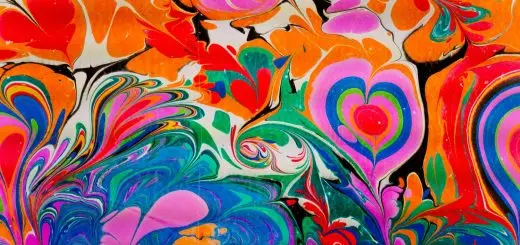What Is the Role of Icons in Orthodox Christmas Worship?

Looking for more amazing products? Check out our online store and explore our collection here! Happy shopping!
Before diving in, please note: This post is for informational purposes only. If you’d like to know more about how we approach topics, feel free to check out our friendly Disclaimer Page.
Hey there, amazing readers! 
We’re committed to delivering quality posts, and your support (even just sticking around despite the ads) means everything to us. So, bear with us, and thanks for helping us keep the good vibes rolling. Now, on to the fun stuff!
TRANSLATE BUTTON AT THE END OF THE ARTICLE
Orthodox Christianity is known for its rich traditions and deep spiritual practices, with icons playing a central role in worship and devotion.
During Orthodox Christmas, celebrated on January 7, these sacred images take on even greater significance.
They are more than just artistic depictions; they are windows to the divine, helping the faithful connect with the spiritual essence of the Nativity story.
Let’s explore the profound role of icons in Orthodox Christmas worship and how they enrich the celebration of Christ’s birth.
Icons: A Window to the Divine
In Orthodox theology, icons are often referred to as “windows to heaven.” They are not merely religious art but are considered sacred objects that convey spiritual truths.
Icons are believed to make the divine present, serving as a bridge between the earthly and heavenly realms.
During Orthodox Christmas, the focus shifts to icons of the Nativity, which depict the birth of Jesus Christ in the humble manger surrounded by Mary, Joseph, angels, shepherds, and the Magi.
These icons serve as visual representations of the Incarnation—the moment God became man.
The Nativity Icon: A Story in Symbols
The Nativity icon is a centerpiece in Orthodox Christmas worship.
Unlike Western depictions of Christmas, which often focus on sentimentality, the Nativity icon is deeply symbolic, emphasizing theological truths about Christ’s birth.
Key Elements of the Nativity Icon:
The Christ Child: Depicted lying in a manger, often wrapped in swaddling clothes resembling burial cloths, symbolizing His future sacrifice.
The Virgin Mary: Shown in a position of prominence, representing her central role in the Incarnation.
Angels and Shepherds: Signifying the heavenly and earthly witnesses to Christ’s birth.
The Star of Bethlehem: Directing attention to the divine nature of the event.
The Cave: Symbolizing the world’s darkness into which Christ was born as the light.
Each element invites the faithful to meditate on the spiritual meaning of Christmas, going beyond the surface of the story to its deeper significance.
Veneration of Icons in Christmas Worship
Veneration of icons is a vital aspect of Orthodox worship, particularly during the Christmas season.
The faithful express reverence through gestures such as bowing, crossing themselves, and kissing the icons.
This is not considered idolatry but an act of honor directed toward the person or event depicted.
Practices Surrounding Icons at Christmas:
Church Displays: Nativity icons are prominently displayed in Orthodox churches, often surrounded by candles and flowers.
They serve as focal points for prayer and meditation.
Home Icon Corners: Families often have a special place in their homes for icons, including Nativity icons, where they gather for prayer during the Christmas season.
Processions: In some Orthodox traditions, icons are carried in processions during Christmas services, symbolizing the joy and significance of Christ’s birth.
Teaching the Faith Through Icons
Orthodox icons serve an educational purpose, especially during Christmas.
They visually communicate the story of Christ’s birth and its theological implications, making them accessible to people of all ages and literacy levels.
For example:
Children: The vivid imagery of the Nativity icon helps children grasp the basics of the Christmas story.
Adults: The layers of symbolism provide a source for deeper reflection and spiritual growth.
Icons thus act as “sermons in color,” conveying profound truths through visual storytelling.
Icons as a Source of Unity
During Orthodox Christmas, icons also foster a sense of unity within the community.
Whether in grand cathedrals or humble homes, the presence of the Nativity icon connects the faithful to a shared tradition that transcends time and geography.
The act of venerating the same icon across Orthodox communities worldwide serves as a reminder of the universal nature of Christ’s birth and its significance for all humanity.
The Spiritual Power of Icons
For Orthodox Christians, icons are not just objects of devotion; they are considered to have spiritual power.
During Christmas, this belief is heightened as the faithful seek blessings and spiritual renewal through the veneration of Nativity icons.
Many Orthodox Christians describe feeling a deep sense of peace and connection to the divine when praying before an icon, especially during the solemn and joyous time of Christmas.
Conclusion: Icons as the Heart of Orthodox Christmas
Icons hold a special place in Orthodox Christmas worship, serving as profound expressions of faith, theology, and tradition.
They invite the faithful to reflect on the mystery of the Incarnation and the profound love of God manifested in Christ’s birth.
Whether displayed in a church, carried in a procession, or cherished in a family’s prayer corner, Nativity icons enrich the spiritual experience of Christmas, making it a time of deep connection to the divine.
Through their beauty and symbolism, they remind us that Christmas is not just a historical event but a living reality that continues to inspire and transform lives.

The Enlightenment Journey is a remarkable collection of writings authored by a distinguished group of experts in the fields of spirituality, new age, and esoteric knowledge.
This anthology features a diverse assembly of well-experienced authors who bring their profound insights and credible perspectives to the forefront.
Each contributor possesses a wealth of knowledge and wisdom, making them authorities in their respective domains.
Together, they offer readers a transformative journey into the realms of spiritual growth, self-discovery, and esoteric enlightenment.
The Enlightenment Journey is a testament to the collective expertise of these luminaries, providing readers with a rich tapestry of ideas and information to illuminate their spiritual path.
Our Diverse Expertise
While our primary focus is on spirituality and esotericism, we are equally passionate about exploring a wide range of other topics and niches 

To ensure we provide the most accurate and valuable insights, we collaborate with trusted experts in their respective domains 
Our blog originally focused on spirituality and metaphysics, but we’ve since expanded to cover a wide range of niches. Don’t worry—we continue to publish a lot of articles on spirituality! Frequently visit our blog to explore our diverse content and stay tuned for more insightful reads.
Hey there, amazing reader! 
Check out our store here and take a peek at some of our featured products below! Thanks for being awesome!










